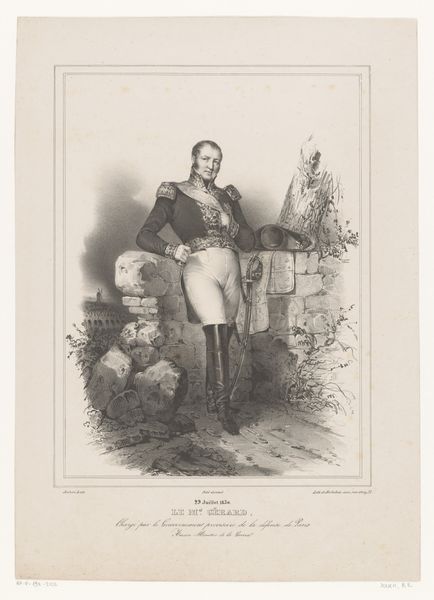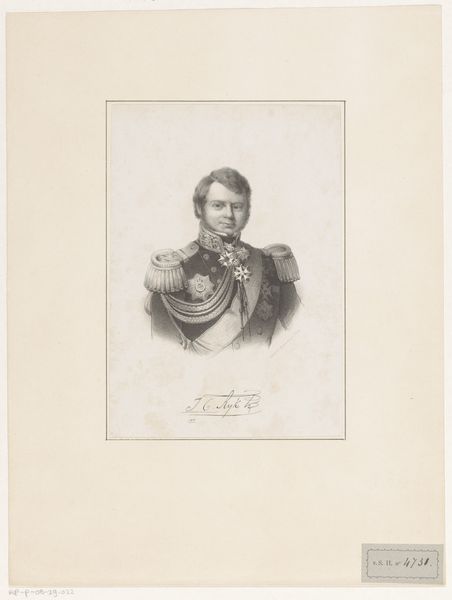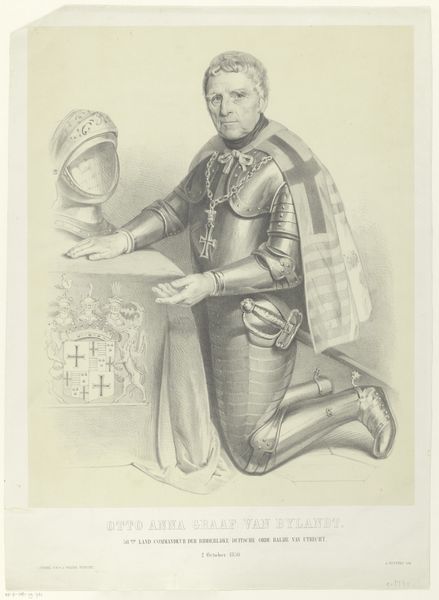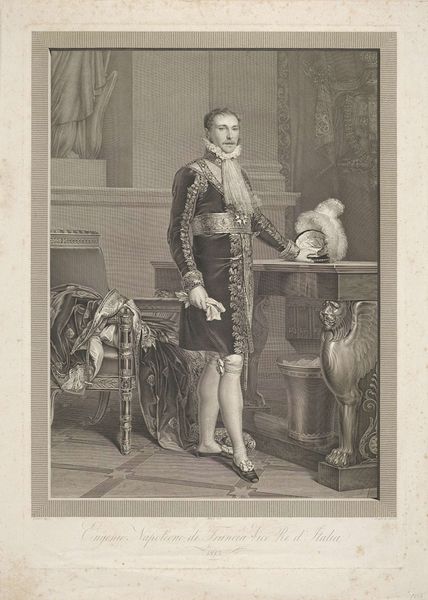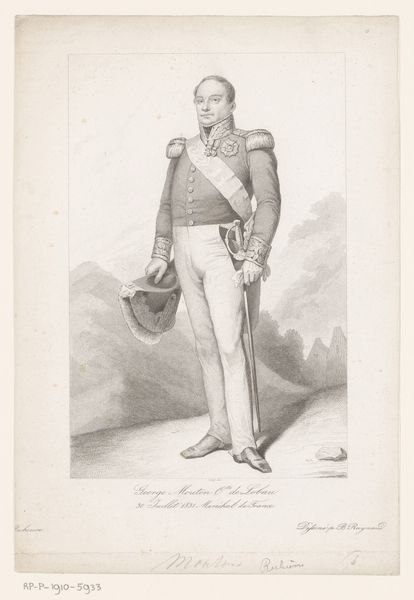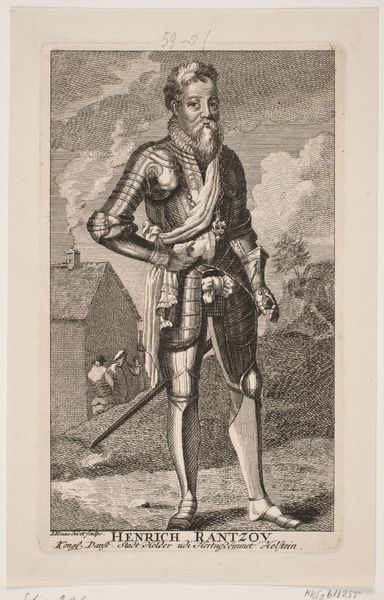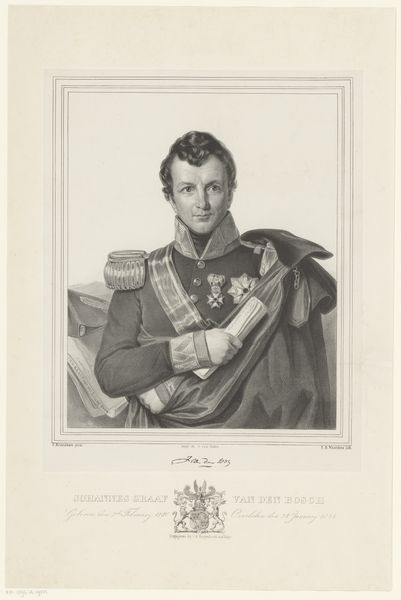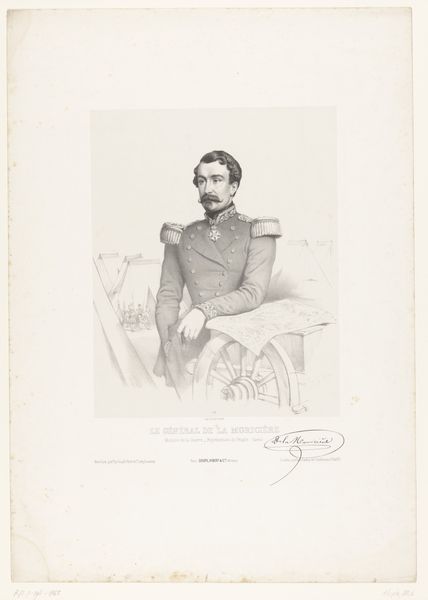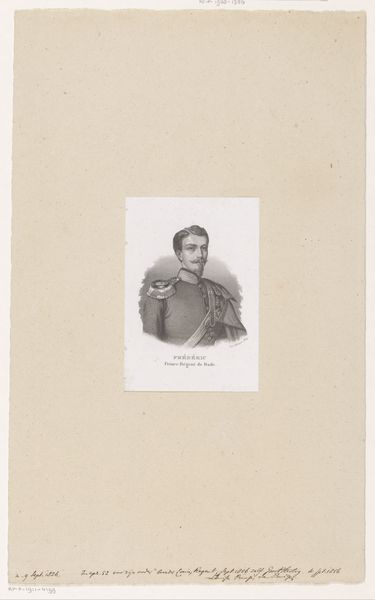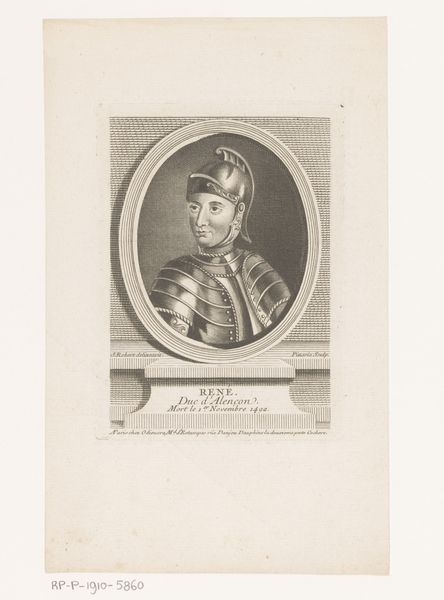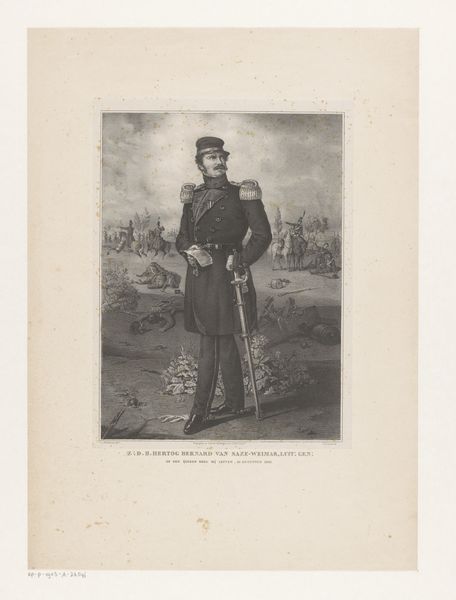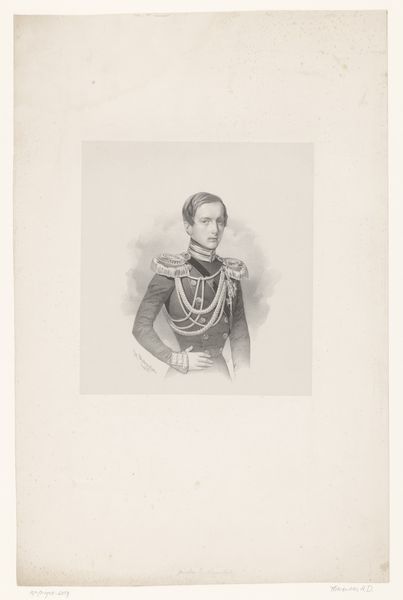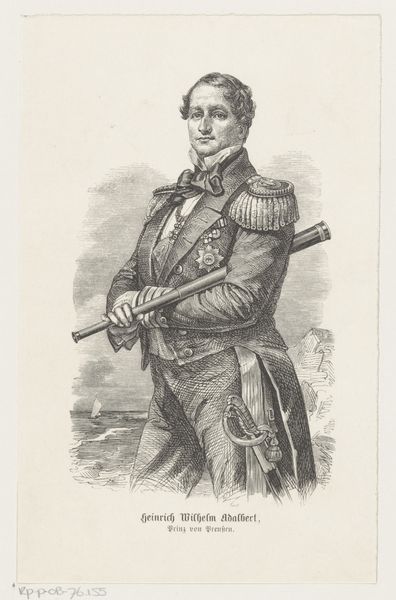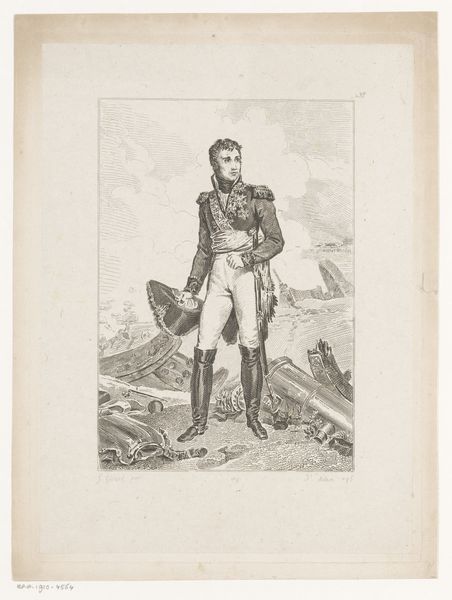
drawing, pencil
#
portrait
#
pencil drawn
#
drawing
#
pencil sketch
#
pencil drawing
#
romanticism
#
pencil
#
portrait drawing
#
history-painting
#
academic-art
Dimensions: height 575 mm, width 456 mm
Copyright: Rijks Museum: Open Domain
Editor: So this is Joseph Schubert’s "Portret van J.F.C.F. de Hemricourt de Grunne" from 1849, done in pencil. There's such precision in the detail, especially in his uniform. He looks very dignified, but I'm curious about the context. What do you see in this piece? Curator: Beyond the surface representation, I see a carefully constructed image meant to project power and legitimacy. Consider the historical backdrop: 1849, a time of revolutions and social upheaval across Europe. This portrait, with its emphasis on military regalia, reflects the sitter's investment in maintaining the existing social order. How does the artistic style—the precision and formality—contribute to this message? Editor: I suppose it elevates him, makes him seem untouchable and important. The almost idealized rendering hides any flaws. Curator: Precisely. It's also crucial to consider what is *not* shown. Are there marginalized voices or perspectives absent from this narrative of power? Whose stories are overshadowed by this celebration of aristocratic authority? Does it raise any questions in your mind? Editor: It makes me wonder about the stories of the people *under* his command, those affected by his power. Curator: Exactly. And we should analyze how that relates to Romanticism as a movement, since Romanticism often idealizes power and masculinity. By looking at those excluded voices, we understand it wasn’t inclusive for many at the time. Editor: I never thought about it like that. It's a good reminder to look beyond the immediate beauty and consider the underlying narratives about class and power at play in historical artworks. Curator: Absolutely. And how those narratives still resonate today, continuing to inform how we understand our social structures.
Comments
No comments
Be the first to comment and join the conversation on the ultimate creative platform.
